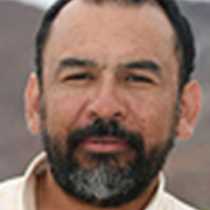Los Titeres Estuary & La Florida Sanctuary, Bahia Magdalena
A heavy, beautiful, dense, cotton-like, almost touchable low-lying stratum of fog covered the whole Magdalena area and its quiet and smooth surface of water this morning whilst a shy sun gently and gradually illuminated the vaporous atmosphere. Windbreakers on, we felt sprayed with everybody’s enthusiasm as we boarded the Zodiac boats for the very last round of Mexican gray whale watching.
Oriented in the solid, silent and monotonous grayness of the fog by a combination of our drivers’ experience, the pangueros’ eyes and, just in case, by our GPS’, the boats skimmed the bay and promptly she begun to unveil her wonders: the gray of the sea, gray of the horizon and gray of the sand dunes of Magdalena island alternatively broken up by inclined rays of divine, golden, “hot”-looking light coming from apertures in the persistent curtain of blowing condensed water, letting us observe the profound blueness of the hidden sky. Fast flying clucking black objects with silhouettes that resembled, deeply in our minds, cormorants, pelicans, frigates and other marine birds, penetrated the atmosphere in all directions, like big, heavy bullets or ghosts in long lines or perfectly geometrical, angled formations; and, for the joy of all of the searching parties, there was almost a fiesta of Mexican gray whales!
In fact, La Florida Sanctuary and its neighborhood was literally full of different units of cow and calf pairs swimming or diving actively or loosely, but with no rush or worries. As we approached two pairs, the boats appeared to simultaneously trigger more action because many of the whales started to show parts of their bodies and commenced to play between the boats. Several mothers approached the boats followed by the playful babies (see photo, top left), going back and forth under the rubber boats, pushing them with their gigantic backs, bellies or “snouts,” and performing various and graceful, elegant knacks and acrobatics, lifting flukes and pectoral fins (see photo, top right), and breaching or spy-hopping by the calves (see photo, bottom right). Many of our guests on the boats were “marked” forever as they were gracefully sprayed by the long-lasting, powerful, atomized exhalation of mother whales that came closer. We also experienced, once more, the soft touching of the skin of the curious calves, and the sight of their unbelievable, confident, noble, tender, naïve and soul-baring eyes that astonished and imprinted our hearts forever.
After hypnotizing hours, and before lunch time, we reluctantly left the gray whale nursery, but we took all of the whales we observed deep into our souls and minds, hoping to return again in the future to have more of these magic moments. We sailed southbound on the Magdalena channel, with a bright, high, naked sun. In the meantime, our talented National Geographic Photographer Susan Seubert nicely shared her portfolio of photos taken on a day-by-day basis, emphasizing our guests and the general character of the trip as the central theme of her assigned fine artwork that totally gave us a new perspective of ourselves. Smiles and expressions of joy were heard while showing some unique and essence-extracting pictures. Later, the National Geographic Sea Bird anchored at El Barril Estuary for kayaking in the intricate channels that surround and depart from the larger one. Our staff also put us on Zodiacs for a quiet, interpretive, relaxing exploration of the mangrove world, with its dozens of species of birds, sea life and treacherous sandy bottoms, shallow sand flats and muddy shores. In this manner we finished a whole exploration journey among and into the different ecosystems that converge at the shores of and waters surrounding the fabulous peninsula of Baja California, its dramatic gulf and its contradictory, alternatively wild and sweet Pacific side, with all their wildlife and wonderful scenery.




